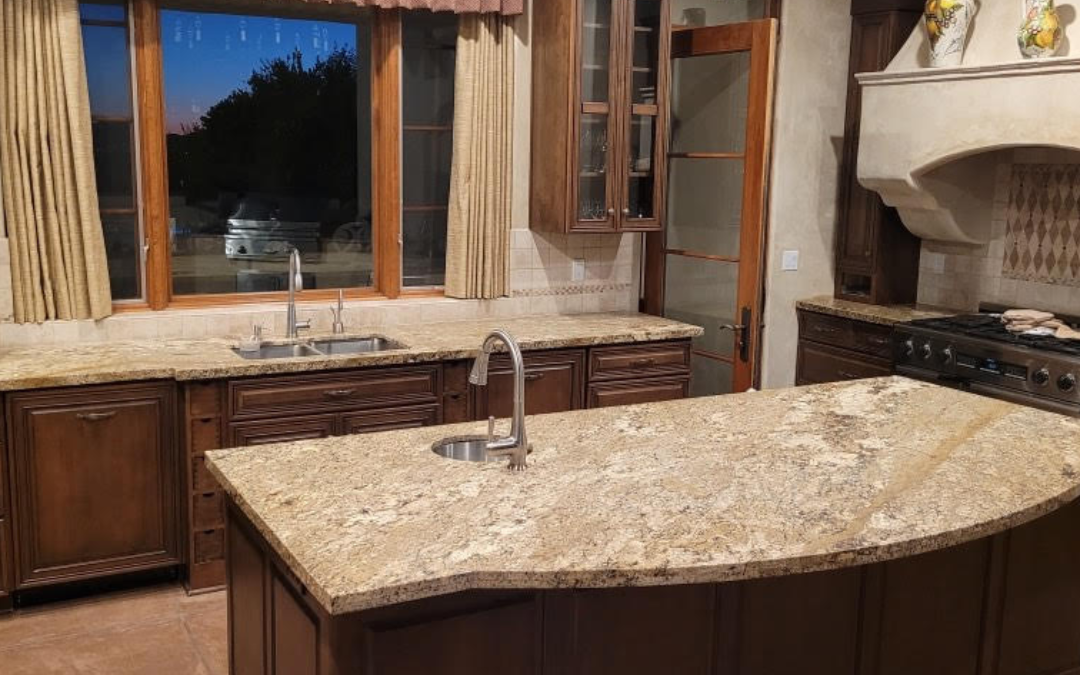All About Quartz: Understanding and Caring for Stone at Home
Quartz is among the most abundant minerals on earth and is widely used in interior design. Learn about the origins of quartz; its use in countertops, cladding, flooring, and more; plus learn how to keep your quartz surfaces looking beautiful.
What comes to mind when you hear the word quartz?
Most likely it’s an image of a clear quartz crystal, the kind you often see in movies or displayed in shop windows—but quartz is so much more than a pretty decoration.
In fact, quartz can be found all around us and is probably within reach of you right now. Your smartphone screen? Quartz. Those new windows you had installed? Quartz. That pesky bunker you did your best to avoid on the back nine last week? Quartz. Even the toothpaste you used to brush your teeth every morning may contain quartz.
Not only is it one of the most abundant minerals on Earth, but the uses of quartz in our modern world are seemingly endless, from electronics and scientific equipment to timepieces, glassware, water purification systems, jewelry, and of course, home décor.
This article will provide a brief introduction to how quartz is formed, its properties and benefits, and how to properly care for your quartz surfaces.
What is quartz?
Quartz is a naturally occurring mineral composed primarily of silicon dioxide, also known as silica. It is found on every continent on the planet and in all forms of rock, including igneous, metamorphic, and sedimentary.
One of the key differences between minerals and rocks is that minerals have a singular chemical structure. In contrast, because rocks are made up of two or more minerals, their chemical structure is varied.
Interesting fact: Granite and marble, both of which are commonly used in home interior design, are rocks that contain the mineral quartz.
What are the properties of quartz?
Quartz is an exceptional mineral.
Because it is resistant to chemical and physical weathering, rocks containing quartz that undergo erosion will wear away over time, leaving the mineral behind. This is what makes up the sand in riverbeds, on beaches, and in desert areas.
The ancient Greeks referred to quartz as “krystallos” because of its resemblance to ice in its clear crystalline form. However, the mineral can be found in nearly every color, from milky white and gray to green, purple, pink, and red.
The variations in color are caused by the presence of other elements or minerals. For example, purple crystalline quartz (known as amethyst) gets its characteristic hue from the presence of iron. Other informal names for quartz include citrine (yellow quartz), aventurine (green quartz), jasper, and chalcedony.
What are the benefits of quartz for interior design?
While quartz in its natural form can be sculpted into eye-catching design elements such as vessel sinks and accent countertops, the majority of quartz used in modern interior design is a mixture of ground quartz and polymers. The result is a beautiful and long-lasting material that adds luxury to your home interior.
The following benefits make quartz an excellent choice for interior design.
- Beauty. Quartz surfaces have a sleek and polished appearance that adds an unmistakable elegance to any room. Pigments may also be added to match your color preferences.
- Durability. On the Mohs Hardness Scale, quartz is a 7, making it harder than steel and most other metals. This makes it extremely durable and resistant to scratches and cracks.
- Heat Resistance. Quartz forms at all temperatures and is naturally heat resistant. This makes it a popular choice for kitchen countertops.
- Stain Resistance. Quartz is non-porous, meaning it will not stain easily like some other natural stone surfaces. Further, quartz surfaces do not require sealing or polishing.
- Versatility. In addition to kitchen countertops, this highly versatile natural stone option can be used in flooring, table and bar tops, bathroom sinks, tub and shower surrounds, wall cladding, backsplashes, and even outdoor fireplaces and poolside features.
What is the best way to care for your quartz accents?
As you may have guessed, quartz is surprisingly easy to maintain. When cared for properly, your quartz countertops, flooring, and other surfaces will stand the test of time.
Quartz naturally resists moisture and dirt, but it is still best to clear away spills and debris quickly. Surfaces may be cleaned with a mixture of mild soap and water. Avoid abrasive cleaning pads, as these may dull the appearance of quartz.
Of course, few things are completely indestructible.
In some cases, impact from a heavy object or exposure to extreme temperatures can crack or damage the beauty of quartz. If this happens, contact the experts at Arizona Stone Proz to restore them to their original state.
Arizona Stone Proz specializes in natural stone restoration.
Quartz, like other natural stone varieties, has unique characteristics that make it a popular home décor choice. If you have additional questions about quartz or need help restoring your quartz surfaces, our team of stone restoration experts is just a phone call away. Call us today at (520) 779-2052, or schedule an appointment using our online form.

